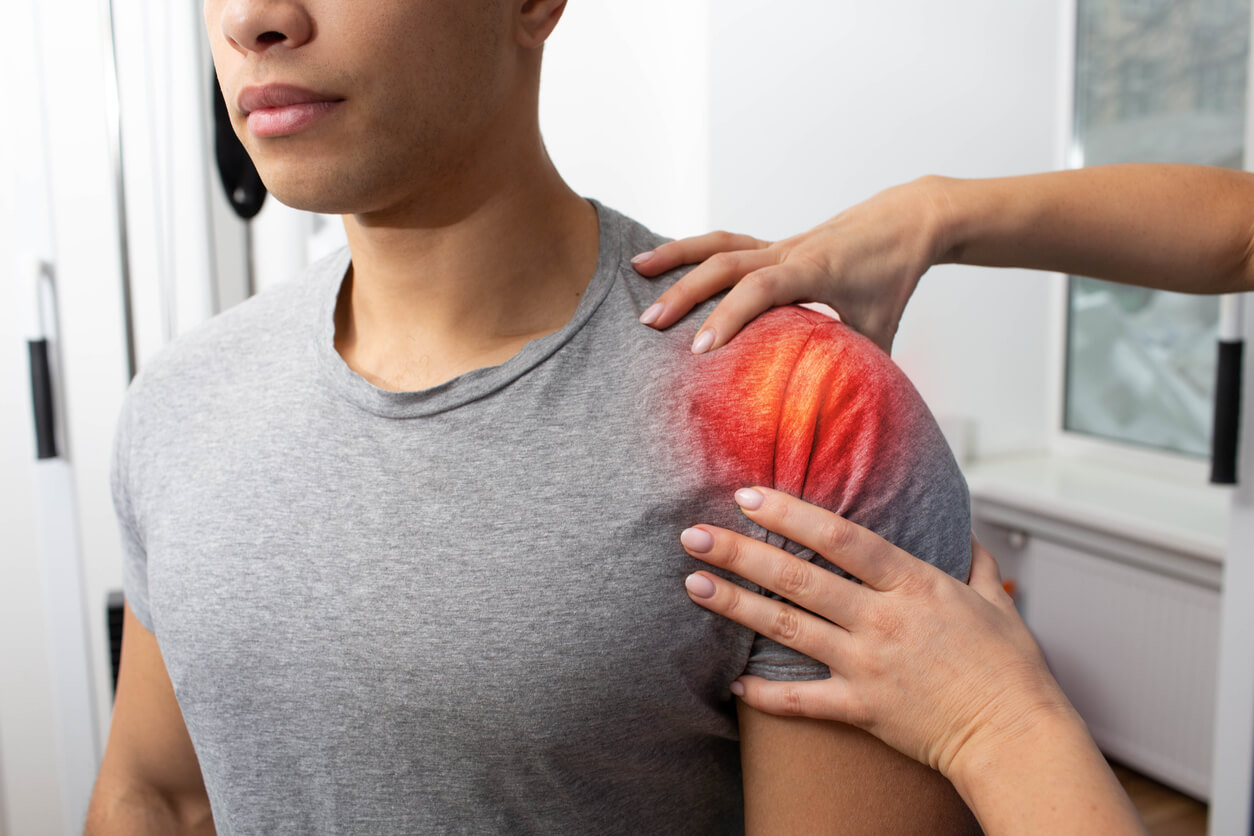
Have you ever felt a nagging pain in your knee after a morning jog, or experienced a sharp ache in your shoulder during a game of tennis? We often brush off these discomforts as part of the game or simply due to overexertion. But what if these pains are signs of something that needs medical attention? This is where a sports medicine doctor for pain comes in.
In this article, we’ll explore the crucial signs that indicate it’s time to see a sports medicine specialist.
Signs That You Need to See a Sports Medicine Doctor for Pain
It’s essential to recognize when discomfort or injury requires the attention of a sports medicine doctor for pain. Here are some signs indicating that it’s time to seek professional help:
Persistent or Intensifying Pain
Pain that doesn’t subside with rest or standard pain relief methods, or pain that worsens with activity, is a clear sign that you need a professional evaluation.
Swelling or Bruising
Significant swelling or bruising, particularly around joints or in areas of impact, can indicate a deeper injury that requires medical attention.
Reduced Range of Motion
You may have a potential injury that a sports medicine doctor should evaluate if you experience:
- Difficulty in moving a joint through its full range of motion
- Stiffness that limits your ability to perform normal movements
Chronic Discomfort
Ongoing discomfort, particularly pain that persists for weeks or interferes with daily activities, should not be ignored.
Pain That Disrupts Sleep or Daily Activities
If your pain is severe enough to disturb your sleep or affect your routine activities, it’s a significant indicator that medical assessment is needed.
Unusual Noises or Sensations in Joints
Popping, snapping, or grinding sensations in your joints during movement are not normal and should be evaluated.
Instability or Weakness
You might have ligament or muscle damage if you experience:
- A feeling of instability in a joint
- Unexpected weakness, particularly during weight-bearing activities
Numbness or Tingling
These sensations, particularly if they occur in a specific area repeatedly during or after activity, could indicate nerve compression or damage.
Recurring or Old Injuries Flaring Up
If an old injury begins to cause pain or discomfort again, it’s important to have it reassessed, as this could indicate incomplete healing or a new issue.
Difficulty Bearing Weight
Trouble putting weight on a limb, or experiencing pain when doing so, is a clear signal that the injury needs professional attention.
Visible Deformities
Any visible abnormality in the shape or alignment of a limb or joint is a strong indicator of a serious injury that requires immediate medical attention.
Limited Improvement with Home Remedies
If standard home treatments like icing, rest, or over-the-counter pain medications aren’t improving your condition, it’s time to seek a more thorough medical assessment.
The Importance of Early Intervention
Addressing sports-related injuries promptly can significantly affect the outcome of your treatment and recovery.
Here are some reasons why early intervention is crucial:
- Preventing Further Damage: Early diagnosis and treatment can prevent injuries from worsening, which might otherwise lead to long-term damage or chronic conditions.
- Quicker Recovery: The sooner you receive appropriate treatment, the faster you can return to your normal activities or sports.
- Accurate Diagnosis: Early intervention allows for a more accurate diagnosis, ensuring that the treatment plan is effective and tailored to your specific needs.
- Preventing Complications: Delaying treatment can lead to complications, such as the development of compensatory injury patterns or chronic pain.
- Maintaining Fitness Levels: Timely medical attention can help in maintaining a certain level of fitness and physical capability, even during recovery.
Preventative Measures in Sports Medicine
Preventing injuries is just as important as treating them. Here are some preventative measures you can take:
Proper Warm-Up and Cool-Down Routines
Engaging in a comprehensive warm-up and cool-down routine before and after physical activity can prepare your muscles and joints, reducing the risk of injury.
Regular Strength and Flexibility Training
Adding exercises for flexibility and strength into your routine can improve your body’s resilience and reduce the likelihood of injuries.
Wearing Appropriate Gear
Using the right equipment, such as supportive footwear, helmets, and protective padding, can significantly reduce the risk of injury.
Hydration and Nutrition
Proper hydration and a balanced diet are essential for maintaining muscle and joint health.
Technique Training and Coaching
Proper technique is crucial in sports and exercise. Regular training and, if possible, professional coaching can help prevent injury due to incorrect form.
Adequate Rest and Recovery Time
Allowing your body enough time to rest and recover after intense physical activity is essential in preventing overuse injuries.
Listening to Your Body
Pay attention to what your body tells you. If you feel pain or fatigue, it’s important to take a step back and rest.
Sports Medicine Doctor in Austin, TX
Paying attention to your body’s signals is key in sports and physical activities. Ignoring pain and discomfort can lead to more serious injuries, which could sideline you for much longer than necessary. A sports medicine doctor is your ally in maintaining optimal health and performance. They can provide expert advice and tailored treatment, and help you return to your favorite activities safely.
If you need a sports medicine doctor in Austin, TX, you can rely on All-Star Orthopedics of Austin’s very own Dr. Carolyn M. Hyde. You may reach us today at (512) 346-4933 or fill out our online appointment request form to schedule a visit with the top orthopedic surgeon near you.
We look forward to serving you!





